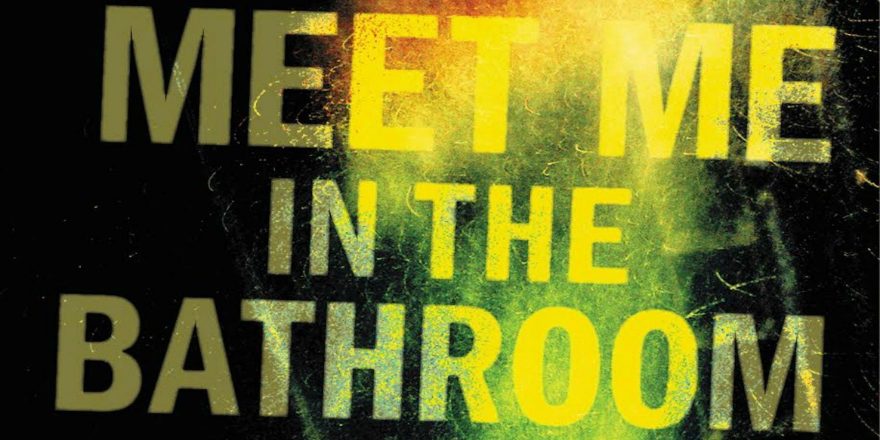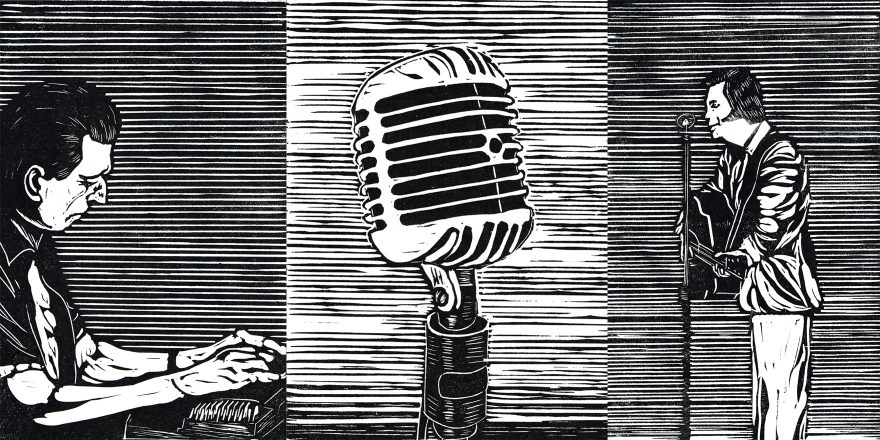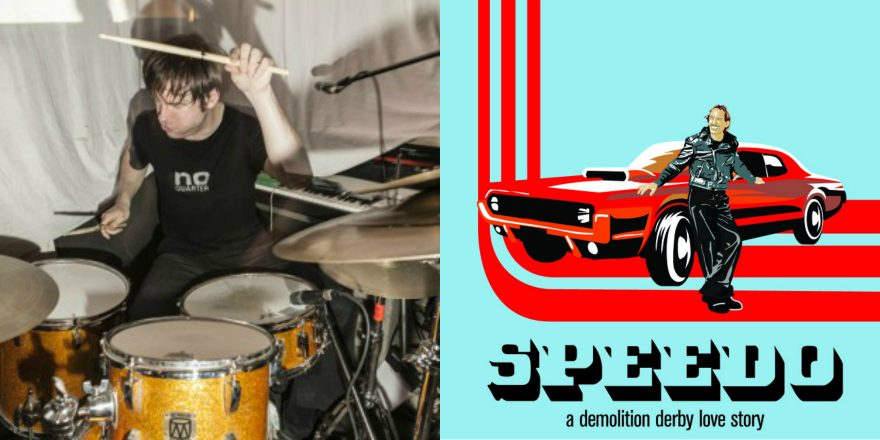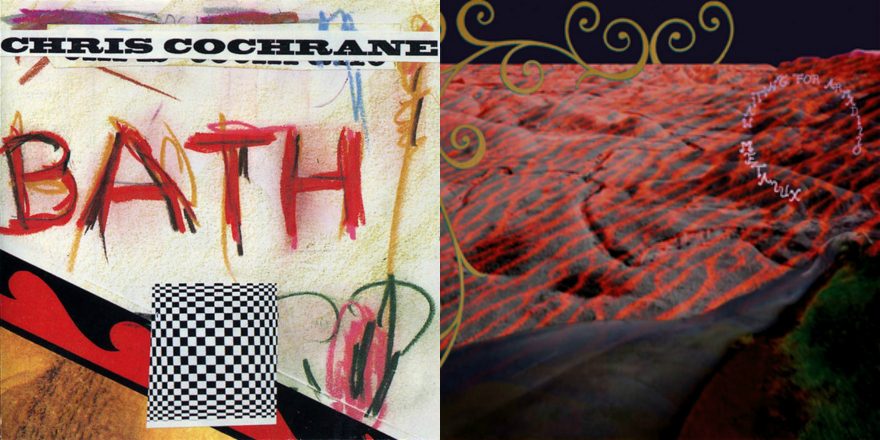When I learned about Lizzy Goodman’s Meet Me in the Bathroom: Rebirth and Rock and Roll in New York City 2001-2011, a Please Kill Me–style oral history collecting quotes and memories from musicians of that era, my first reaction was bemused indignation: Why the hell didn’t she talk to me? My experience in this milieu during the salad days—before the dot-com-crash; before 9/11; before rampant piracy and the media spotlight on “Brooklyn” as an adjective—was deep enough. My band, Oneida, was recording, performing and releasing records out of our Clinton Hill Brooklyn bastion before the bands featured in the book played a single note. Of course, there were many more bands than the ones mentioned in the book, but in terms of the experimental rock scene that included me, I was sure Meet Me would get everything wrong.
When I read the introduction, I became concerned with the author’s tone. She’s a little younger than me, which, in my twisted knee-jerk assessment, was a strike against her. Goodman’s scene surrounded the Strokes and the music media and culture that rabidly celebrated them and their ilk. I was not among these: When the Strokes emerged in 2001, it felt horribly unfair. It’s kind of impossible to be fighting for scraps of attention from an indifferent (or worse) media establishment and witnessing the lauding of a younger, sexier, and probably more talented band. And the Strokes’ debut EP, The Modern Age, and full-length, Is This It, didn’t even sound good! Somehow, they managed to release a major-label album that sounded like it was recorded onto a wax cylinder by Tom Waits’ third-string engineer. It was playing everywhere I went, daring me to surrender to its (now) obvious charms. Feeling self-righteously as if I was on the true rock odyssey, I lashed myself to the mast, plugged my ears and obliviously dismissed the Strokes out of hand. They don’t love [music] like I love [music].
Speaking of which… Around the same time, I went on a casual date with a woman who asked me, “Have you ever heard of this band Yeah Yeah Yeahs?” That she loved them felt like a personal affront to a self-absorbed guy like myself. A week or two earlier, I saw the YYYs open for the Gossip as the first out of three bands at the Polish National Home (which is now Warsaw). I didn’t think much, beyond the fact that Karen O, the quiet, shy woman I’d seen around Plant Bar in the East Village and at DIY parties in Williamsburg, was transformed into a self-possessed embodiment of joyful abandon. I’d started doing unofficial A&R for Jagjaguwar, so YYYs guitarist Nick Zinner gave me the band’s CD-R, but I wasn’t able to hear the magic there. (Can I just admit to the world right now that I was completely wrong?)
I had similar reactions at the time to Liars, Interpol, and TV on the Radio, who all figure in Meet Me. I was immersed in the New York music scene in kind of a parallel universe. Oneida performed almost exclusively at loft parties in Brooklyn. At first, it was because no club would book us, and then we discovered the charms of a scene that was predicated on community and poised beyond the crass commercialism of even the smallest Manhattan venues. The contemporary bands that spoke to us at the time came from other parts of the country: Providence had Lightning Bolt, Arab on Radar, and the 25 Suaves; in Detroit, you could find Wolf Eyes’ nascent shredding; Pittsburgh was home to the Dirty Faces. As I moved through the narrative of Meet Me, I realized that I wouldn’t have much to add to Goodman’s account. In fact, I’m probably the worst person to review this book because, obviously, I couldn’t experience music objectively during that period. (This could still be the case, actually.) It makes sense that, given my first impressions of its subjects, I misjudged Meet Me, too. So I’m sorry it’s taken me this long to say it, but: This book is incredible. I am giving it a rave. I LOVED it.
Let’s get my minor criticisms out of the way. The book gets off to a shaky start. The short first chapter, “A Place Where Anything Can Happen,” is kind of insufferable. It’s stuffed with banal commentary from journalists and select musicians about the allure of New York City as a concept and fantasy. As with everything in this well-crafted book, though, there’s a utility to this chapter. Goodman is setting up NYC as a place where people, scenes, and art emerge from a kind of projected fever dream. While I don’t necessarily disagree with her point, the same idea could have been boiled down to a single quote—maybe even an epigraph. As the second chapter led off with quotes from Marc Maron and Moby, I felt like I had signed up for a nightmare. Not only was I going to have to read this 600-page book, I was going to have to listen to these guys describe the music?
Cringing a bit, I read further—and was quickly swept away by Goodman’s handle on the timeframe and her excellent editing. For instance, featuring the then-infamous buzz band Jonathan Fire*Eater in an early chapter is a stroke of genius. The ratio of their hype to their duration as a band made them a kind of inside-baseball cautionary tale about the destructive nature of drug abuse and the inability of the major labels to understand what made their artists special. In telling the tale of their rise and precipitous dissolution, we’re given a metaphor that resonates with all the promise, misplaced desperation, insanity, gold-rush mentality, and idiocy of the era that followed.
Meet Me In The Bathroom is a hell of a lot of fun. If you wondered about what actually happened to the Strokes after those first two flawless albums, how that Interpol major label debut tanked, the frenzy that surrounded Yeah Yeah Yeahs’ early years, or why the Rapture’s debut major label album took so long to come out, you’ll get all the details here, and more. I found Goodman’s editing to be flattering to just about every subject covered. Sure, James Murphy of LCD Soundsystem and DFA comes off like a difficult person—but you can’t deny his ambition and accomplishments. Karen O is perhaps my favorite subject. Her intelligent commentary is illuminating and articulate, and tends to lay waste to the standard rock star musings—just like her singular live persona. She talks about a self-destructive phase here:
When I saw that film The Wrestler, it was basically: “That’s me.” I was totally related to that because the more that Mickey Rourke hurt himself the more ravenous his audience was, and in response to that, the more the expectation he felt to provide that for them. And that’s kind of where I was.
And I loved this quote about her image:
Every photo you’d see would be basically the most unattractive, ugly moment of every show, but it’s pretty awesome that that’s what they wanted to showcase. The real. The gritty, visceral, bleh real…Not everything looking immaculate and right. They actually wanted to showcase the punkest-looking shot of me they could find, which would always be the most unattractive.
Goodman casts a wide net, covering bands like the Killers, Kings of Leon, the Hives, the Vines, and the White Stripes. Even though these bands were certainly around, they ain’t New York bands. The argument is that they were inspired in part by bands like the Strokes and went on to make an impact on the New York media landscape—it might be difficult to remember now, but in the ’90s and early 2000s, New York music media had the power to hoist unknown bands out of obscurity. Maybe Goodman could have kicked out these outsiders and turned her attention to some of the bands who were ignored, like the wildly popular Animal Collective, or even Black Dice, who only get a cursory mention. But the information Goodman assembles has a clockmaker’s logic and flow—and everything makes sense within its context. Goodman covers what broadly passed for rock and roll culture during the 2000s, and a book with a narrower focus would not be able to portray it with the same richness.
Goodman doesn’t just focus on the bands. She trains her eye on a number of influential DJ/dance parties (and their principal architects), like Motherfucker, Tiswas, Squeezebox, and Misshapes. These parties mashed together a love of indie rock, glam, psych, garage, and experimental dance music that influenced so many bands and journalists who roamed NYC during that time. I never went to these events, so reading about the debauchery that went on there contextualized excitement that greeted the bands who made it past those minor leagues. Goodman illuminates the primordial soup that birthed the attention trained on the music of the era.
This book might not contain the stories that I lived, but I’m an adult. It doesn’t always have to be about me. Meet Me In The Bathroom embraces the landscape of the artists from 2001-2011 who made a deep cultural impact—at least at the time. Goodman’s subjects are mostly still in active bands, and compared to Please Kill Me, which was released 20 years after the heyday of CBGB, I’m not sure whether this book will remain as essential as Gillian McCain and Legs McNeil’s masterpiece oral history. But Goodman has created an amazing time capsule here, and whether or not you agree with the worthiness of her subjects does not change the fact that her work bears the energy and spirit that was absolutely true in the moment. For all I didn’t get the first time around: I was there. I should know.








